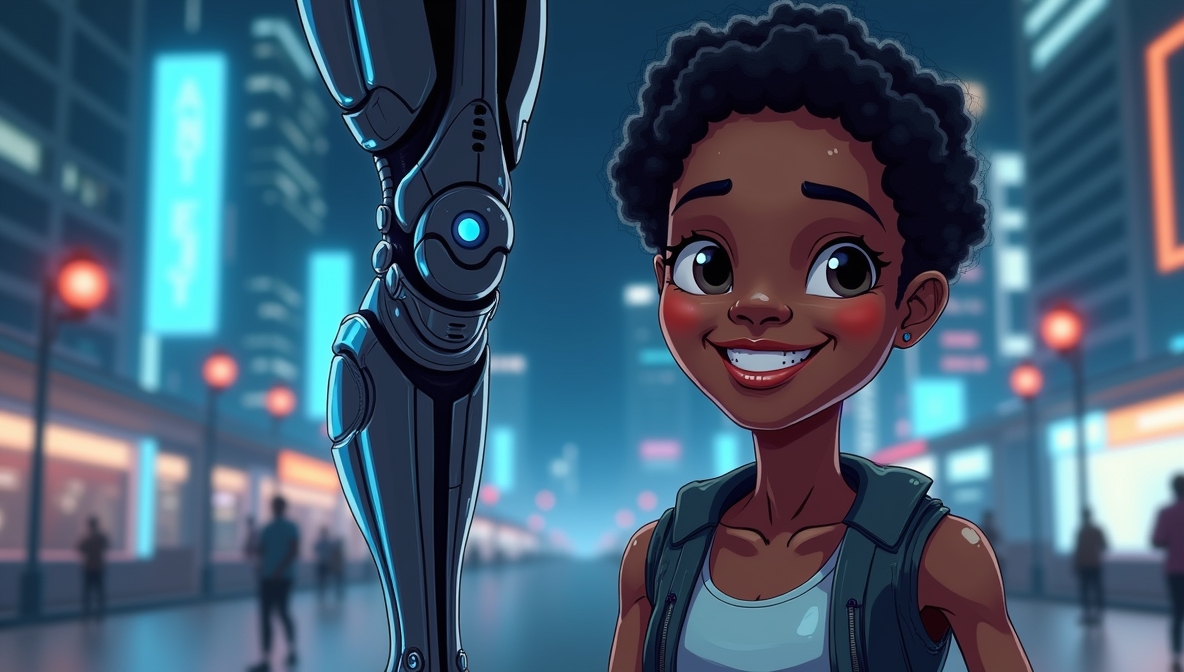In a remarkable leap forward for medical technology, AI-powered prosthetics are transforming the lives of amputees worldwide, offering unprecedented levels of mobility, control, and independence. As of April 2025, these cutting-edge devices are redefining what’s possible for individuals with limb loss, blending artificial intelligence with advanced robotics to create prosthetics that move and feel more like natural limbs than ever before.
The Power of AI in Prosthetics
Traditional prosthetics, while functional, often lack the precision and adaptability needed for complex tasks. Enter AI-powered prosthetics, which use machine learning algorithms to interpret neural signals, muscle movements, and even user intent. These devices learn from their users, adapting in real-time to provide smoother, more intuitive control.
One of the leading innovations comes from NeuroFlex, a biotech company that has developed a prosthetic arm capable of performing intricate tasks like typing, cooking, and even playing musical instruments. The arm uses a network of sensors to detect electrical signals from residual muscles, which an onboard AI translates into precise movements. “It’s like the prosthetic becomes an extension of your body,” said Dr. Amara Khan, NeuroFlex’s chief engineer.
Similarly, lower-limb prosthetics are seeing breakthroughs. The IntelliLeg, a smart prosthetic leg developed by MobilityAI, adjusts its gait based on terrain, speed, and user preferences. Whether climbing stairs or sprinting, the device uses AI to optimize balance and energy efficiency, reducing fatigue and the risk of falls.
Real-World Impact
The impact of these advancements is profound. Take the case of Sarah Mitchell, a 28-year-old amputee who lost her leg in a car accident. After receiving an IntelliLeg, she completed her first half-marathon in March 2025. “I never thought I’d run again,” Mitchell said. “This leg doesn’t just help me walk—it lets me live my life on my terms.”
Globally, over 50 million people live with limb loss, and AI prosthetics are making mobility accessible to more of them. In regions with limited healthcare infrastructure, companies are developing affordable versions of these devices. For example, OpenBionics has partnered with NGOs to distribute 3D-printed, AI-enhanced prosthetic hands in low-income countries, with costs as low as $500 per unit.
Overcoming Barriers
Despite their promise, AI prosthetics face challenges. High-end models can cost upwards of $50,000, putting them out of reach for many. Researchers are working to reduce costs through modular designs and scalable manufacturing. Additionally, the learning curve for users can be steep, requiring weeks of training to master the neural interface. To address this, companies are integrating virtual reality therapy to help users adapt more quickly.
Another hurdle is battery life. Current prosthetics require frequent recharging, which can disrupt daily life. However, advancements in energy-efficient AI chips and wireless charging are expected to extend usage times significantly by 2026.
A Collaborative Effort
The development of AI prosthetics is a testament to interdisciplinary collaboration. Engineers, neuroscientists, and data scientists work alongside amputees to ensure the technology meets real-world needs. User feedback has been critical, with many companies hosting “co-design” workshops where amputees test prototypes and suggest improvements.
Governments and insurers are also stepping up. In 2025, several countries, including Canada and Germany, expanded healthcare coverage for AI prosthetics, recognizing their long-term benefits in reducing secondary health issues like joint pain and depression.
Looking Ahead
The future of AI prosthetics is bright. Researchers are exploring brain-computer interfaces that could allow users to control prosthetics directly with their thoughts, bypassing muscle signals entirely. Others are investigating sensory feedback systems to restore the sense of touch, enabling users to feel textures or temperature through their prosthetics.
Beyond individual mobility, these advancements are reshaping societal perceptions of disability. “We’re not just building tools; we’re empowering people to redefine their potential,” said Dr. Khan. Initiatives like the Cybathlon, a global competition for assistive technology users, are showcasing the capabilities of AI prosthetics, with the 2025 event drawing record crowds.
A New Era of Possibility
For amputees, AI-powered prosthetics are more than devices—they’re a gateway to freedom. From climbing mountains to dancing at weddings, these technologies are helping people reclaim their lives. As costs decrease and accessibility grows, the revolution in mobility is poised to reach millions more.
In a world where technology often feels impersonal








